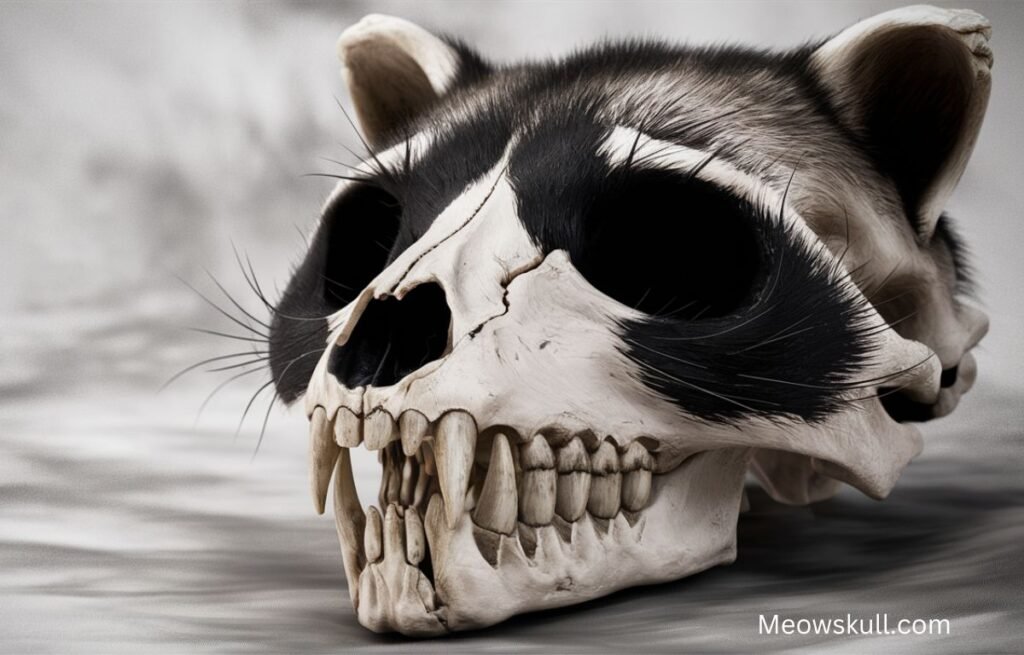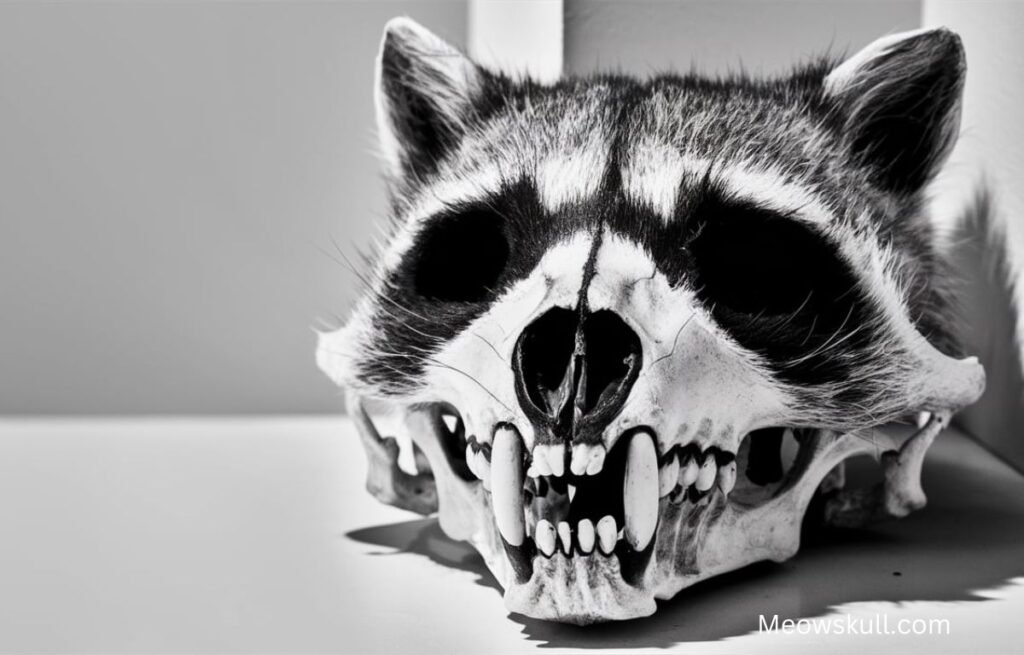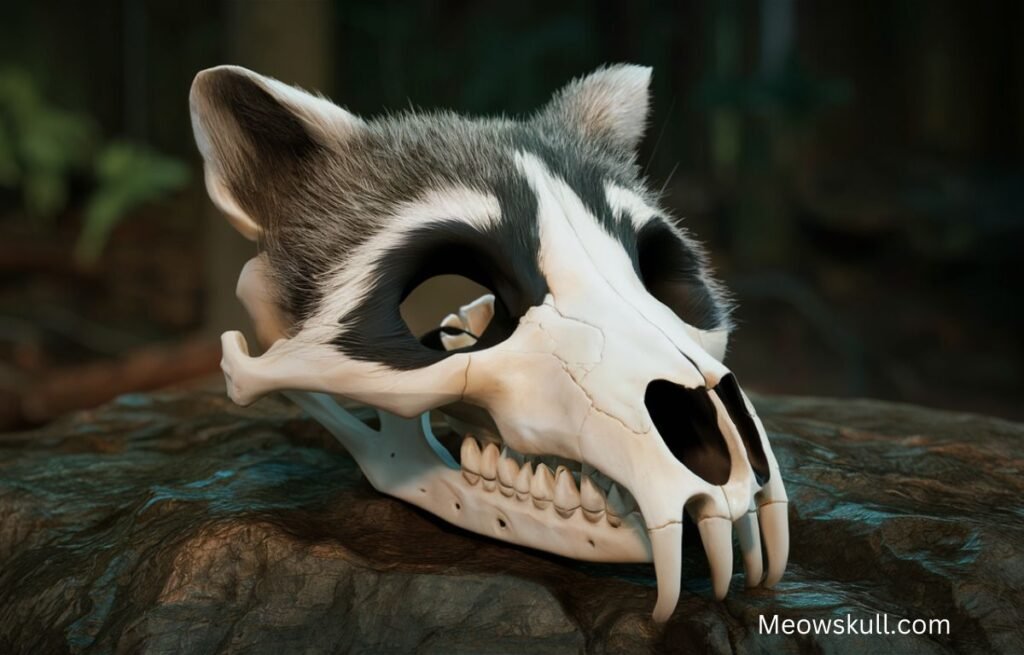Raccoons are often seen as clever, curious creatures, but have you ever wondered what lies beneath their mischievous expressions? Raccoon skulls are more than just bones; they tell a story of adaptability, intelligence, and survival. In this article, we’ll dive into the anatomy, function, and cultural significance of the raccoon skull. Whether you’re a nature enthusiast, a student, or just curious, this guide will give you an in-depth understanding of this intriguing topic.
Introduction to the Raccoon Skull
Raccoons, scientifically known as Procyon lotor, are native to North America. These nocturnal mammals are known for their distinctive black “mask” and ringed tail. But beyond their fur-covered exterior lies a skull that has evolved to support their unique lifestyle. The raccoon skull is not just a part of their anatomy; it is a key to understanding their behavior and survival tactics.
Anatomy of a Raccoon Skull
The raccoon skull is a marvel of evolutionary engineering. It is designed to support a diverse diet, from fruits and nuts to small animals. The skull is relatively small, about 10 to 12 cm in length, with a broad, rounded shape. Key features include:
- Cranium: The cranium is robust, protecting the brain. Raccoons have a well-developed sense of smell, and this is reflected in the structure of their nasal cavity.
- Dentition: Raccoons are omnivores, and their teeth reflect this. They have sharp incisors and canines for tearing flesh, and flat molars for grinding plants.
- Orbits: The large eye sockets, or orbits, suggest their reliance on vision, particularly in low light conditions.
Also Read: Cow Skull: Symbolism, Decor, and Care Guide
How the Skull Supports Raccoon Behavior

Raccoons are known for their dexterous paws and ability to manipulate objects. The skull plays a crucial role in this behavior. The strong jaw muscles allow raccoons to bite through tough materials, while the large braincase supports their problem-solving abilities. These traits are essential for a species that often raids human garbage cans or pries open shellfish for a meal.
Raccoon Skull vs. Other Mammals
How does the raccoon skull compare to those of other mammals? In many ways, it is a blend of features seen in both carnivores and herbivores. Unlike the elongated skulls of canines, the raccoon’s skull is shorter and more rounded, reflecting its omnivorous diet. Compared to rodents, raccoons have fewer but more versatile teeth, allowing them to consume a wider range of foods.
The Evolution of the Raccoon Skull
The raccoon skull has evolved over millions of years, adapting to various environments. Early ancestors of the raccoon were likely more specialized, but the modern raccoon’s skull shows traits of adaptability. This versatility has allowed raccoons to thrive in both urban and wild environments, from forests to city streets.
Also Read: Peter Griffin Fortnite: Is the Family Guy Star Coming?
Identifying a Raccoon Skull: Tips and Tricks

If you ever come across a skull in the wild, how can you tell if it belongs to a raccoon? Here are some tips:
- Size and Shape: Look for a small, rounded skull with a length of 10 to 12 cm.
- Teeth: Raccoon teeth are a mix of sharp canines and flat molars, reflecting their omnivorous diet.
- Eye Sockets: The large orbits are a distinguishing feature, indicating the importance of vision in the raccoon’s life.
Cultural Significance of Raccoon Skulls
Throughout history, raccoons and their skulls have held various cultural meanings. In Native American folklore, raccoons are often seen as symbols of curiosity and cleverness. Some cultures also believe that raccoon skulls hold spiritual power, representing cunning and adaptability. Today, raccoon skulls are sometimes used in art, jewelry, or as educational tools in museums.
The Ethical Considerations of Collecting Raccoon Skulls
Collecting animal skulls can be a controversial topic. While some people collect them for educational or artistic purposes, it’s important to consider the ethical implications. Always ensure that skulls are obtained legally and ethically, without harming living animals. If you’re interested in collecting raccoon skulls, consider sourcing them from reputable dealers who follow legal guidelines.
Also Read: Skull Caps: A Complete Guide to Choosing and Wearing
Caring for and Displaying Raccoon Skulls

If you own or plan to acquire a raccoon skull, proper care is essential to preserve its condition. Here are some tips:
- Cleaning: Gently clean the skull with a soft brush to remove dust. If necessary, use a mild soap and water solution, but avoid harsh chemicals.
- Storage: Store the skull in a cool, dry place away from direct sunlight to prevent discoloration and damage.
- Display: When displaying the skull, consider using a stand or case to protect it from damage.
The Future of Raccoon Skull Studies
As our understanding of raccoons and their anatomy grows, so too does the interest in studying their skulls. Scientists continue to explore how the raccoon skull has adapted to various environments, and what this can tell us about the species’ future. With advances in technology, such as 3D scanning and imaging, we may soon uncover even more about these fascinating creatures.
Conclusion
The raccoon skull is more than just a bone structure; it’s a window into the life of one of nature’s most adaptable animals. From its anatomy and evolution to its cultural significance, the raccoon skull offers a wealth of information for those willing to look deeper. Whether you’re a collector, a student, or simply curious, understanding the raccoon skull can give you a greater appreciation for these clever creatures. By preserving and studying these skulls, we can continue to learn about the raccoon’s role in the ecosystem and its ability to thrive in a rapidly changing world.
FAQs about Raccoon Skulls
What does a raccoon skull look like?
A raccoon skull is small, usually around 10 to 12 cm in length, with a broad, rounded shape. It has large eye sockets, strong jaw muscles, and a mixed dentition of sharp canines and flat molars. The skull is designed to support the raccoon’s omnivorous diet and its adaptable, clever behavior.
How can I tell if a skull is from a raccoon?
To identify a raccoon skull, look for a rounded shape with large orbits (eye sockets) and a mix of sharp and flat teeth. The skull should be about 10 to 12 cm in length, and the teeth should reflect an omnivorous diet. Additionally, the jaw should be strong and capable of handling a variety of foods.
Are raccoon skulls used for any specific purposes?
Yes, raccoon skulls are often used for educational, artistic, and cultural purposes. They can be found in museums, used in art or jewelry, and are sometimes collected by enthusiasts. In some cultures, raccoon skulls hold symbolic meanings, representing traits like curiosity and adaptability.
Is it legal to collect raccoon skulls?
Collecting raccoon skulls is legal in many areas, but it is important to ensure that the skulls are obtained ethically and legally. Always check local laws and regulations before collecting any animal remains, and consider purchasing from reputable dealers who follow ethical guidelines.
How should I care for a raccoon skull?
To care for a raccoon skull, gently clean it with a soft brush and mild soap if needed. Store the skull in a cool, dry place away from direct sunlight to prevent damage. If displaying the skull, use a stand or case to protect it from dust and physical harm.
What can the study of raccoon skulls tell us?
Studying raccoon skulls can reveal a lot about the raccoon’s diet, behavior, and evolutionary history. By examining the skull’s structure, scientists can learn how raccoons have adapted to different environments and what this means for their survival in the future.
Are raccoon skulls fragile?
Raccoon skulls, like most animal skulls, are delicate and can be fragile if not handled properly. It’s important to store and display them carefully to avoid cracking or breaking. Proper care and handling can preserve the skull’s condition for many years.
Can I find raccoon skulls in the wild?
Yes, it is possible to find raccoon skulls in the wild, especially in areas where raccoons are common. However, it is essential to approach this practice ethically, ensuring that the skulls are collected legally and without disturbing the local wildlife.
How do raccoon skulls differ from those of other mammals?
Raccoon skulls are unique in their blend of features from both carnivores and herbivores. Unlike the elongated skulls of canines or the specialized teeth of rodents, raccoons have a more versatile skull with mixed dentition, allowing them to consume a wide range of foods.
What is the significance of the large eye sockets in a raccoon skull?
The large eye sockets, or orbits, in a raccoon skull indicate the importance of vision in the raccoon’s life. Raccoons are nocturnal animals, and their well-developed vision helps them navigate and forage in low-light conditions, making the large orbits a key feature of their skull anatomy.

As a seasoned contributor to “Meowskull”, Rosalie combines her linguistic prowess with a keen understanding of various topics, ensuring a delightful and informative reading experience. Her articles effortlessly blend clarity, creativity, and a touch of elegance, making language exploration an exciting journey for readers.